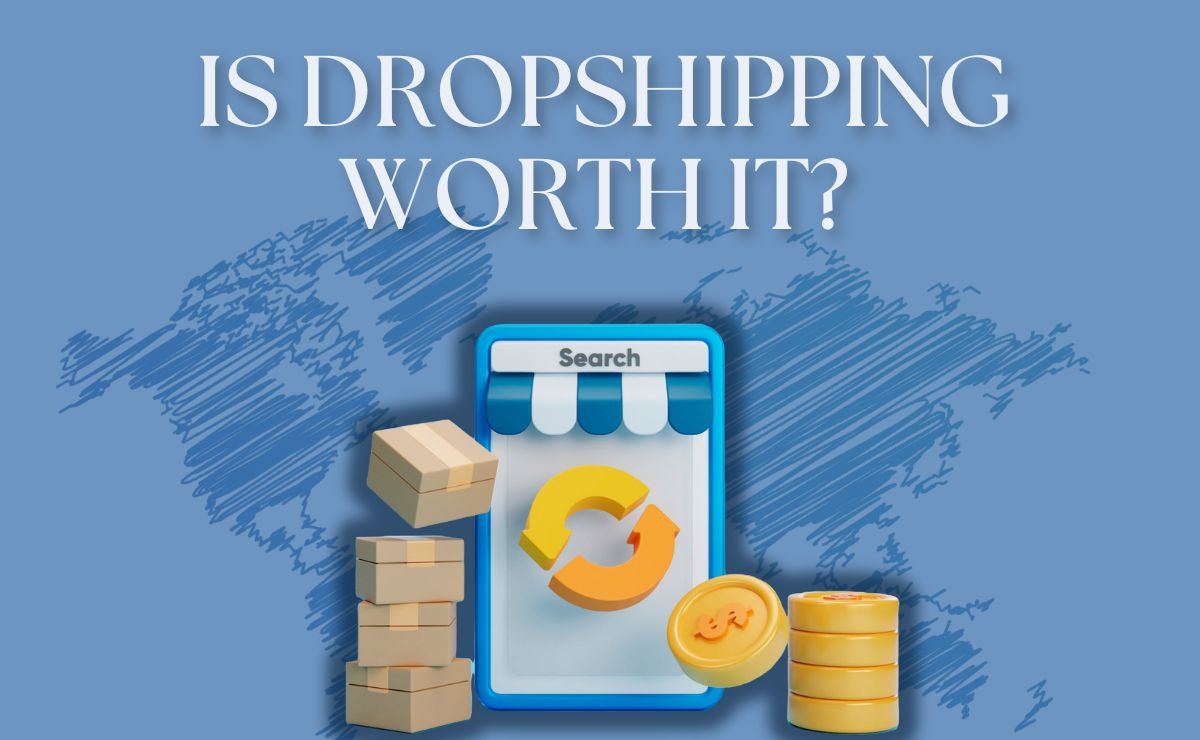
From Zero to Hero: The Inspiring Stories of Successful Dropshipping Stores
- 2024-10-19
-
2

Dropshipping has revolutionized the e-commerce industry, providing entrepreneurs with a low-risk and cost-effective way to start their own online businesses. In a traditional retail model, the business owner would need to invest in inventory upfront and manage the logistics of storing and shipping products. However, with dropshipping, the retailer doesn't need to keep any inventory on hand. Instead, when a store sells a product, it purchases the item from a third party and has it shipped directly to the customer. This means that the retailer never sees or handles the product.
One of the biggest benefits of dropshipping is that it allows entrepreneurs to start their own businesses with little upfront investment. They can test different products and niches without having to commit to purchasing inventory. Additionally, dropshipping eliminates the need for warehousing and fulfillment, which can be costly and time-consuming. This allows business owners to focus on marketing and growing their store.
The growth of dropshipping in e-commerce has been staggering. According to a report by Grand View Research, the global dropshipping market size was valued at $149.4 billion in 2020 and is expected to grow at a compound annual growth rate (CAGR) of 28.8% from 2021 to 2028. This growth can be attributed to factors such as the increasing number of online shoppers, the rise of social media marketing, and the ease of starting an online store.
The Journey of a Successful Dropshipping Store: From Zero to Hero
To understand the potential of dropshipping, let's take a look at some real-life examples of successful dropshipping stores and the challenges they faced along the way.
One such example is Oberlo, a popular dropshipping app that was acquired by Shopify in 2017. Oberlo started as a small side project by a group of friends who wanted to make it easier for people to start their own online businesses. They faced challenges such as finding reliable suppliers, optimizing their website for conversions, and building a strong brand identity. However, through perseverance and continuous improvement, Oberlo grew to become one of the leading dropshipping apps in the industry.
Another success story is that of Gymshark, a fitness apparel brand that started as a dropshipping store in 2012. The founders of Gymshark faced challenges such as finding high-quality suppliers, managing inventory, and building a loyal customer base. However, they overcame these challenges by focusing on product quality, creating a strong brand identity, and leveraging social media marketing. Today, Gymshark is a multi-million dollar company with a dedicated following of fitness enthusiasts.
From these examples, we can learn several lessons. Firstly, it's important to be persistent and not give up when faced with challenges. Building a successful dropshipping store takes time and effort. Secondly, it's crucial to focus on product quality and customer satisfaction. By providing value to customers, you can build trust and loyalty. Lastly, continuous improvement is key. Stay updated with the latest trends and technologies in e-commerce and adapt your strategies accordingly.
How to Choose the Right Niche for Your Dropshipping Store
Choosing the right niche is crucial for the success of your dropshipping store. Here are some factors to consider when selecting a niche:
1. Passion and Knowledge: Choose a niche that you are passionate about or have knowledge in. This will make it easier for you to understand your target audience and create compelling marketing campaigns.
2. Market Demand: Research the market demand for different niches using tools like Google Trends or keyword research tools. Look for niches that have a consistent level of demand or are trending upwards.
3. Competition: Evaluate the level of competition in your chosen niche. While some competition is healthy, too much competition can make it difficult to stand out. Look for niches with a balance of demand and competition.
4. Profitability: Consider the profit margins of products in your chosen niche. Look for products that have a higher markup and can generate a good profit.
There are several tools and resources available to help with niche selection. One such tool is AliExpress, a popular platform for finding dropshipping suppliers. AliExpress allows you to browse through different categories and see the number of orders and customer reviews for each product. This can give you an idea of the demand and popularity of different niches.
Additionally, you can use keyword research tools like Google Keyword Planner or SEMrush to identify popular search terms related to your niche. This can help you understand the level of interest in your chosen niche and identify potential keywords for your SEO and advertising campaigns.
Some profitable niches in dropshipping include fitness apparel, beauty and skincare products, home decor, and pet supplies. These niches have a consistent level of demand and offer a wide range of products to choose from.
The Importance of Product Research and Selection in Dropshipping
Product research and selection are crucial steps in building a successful dropshipping store. Here are some strategies for finding winning products:
1. Trend Analysis: Keep an eye on the latest trends in your chosen niche. Look for products that are currently popular or have the potential to become popular in the near future. This can help you stay ahead of the competition and capitalize on emerging trends.
2. Customer Reviews: Read customer reviews for products in your chosen niche. Look for products that have positive reviews and high ratings. This can give you an idea of the quality and popularity of different products.
3. Supplier Reliability: Choose suppliers that are reliable and have a good track record. Look for suppliers with high ratings, good customer service, and fast shipping times. This will ensure that your customers receive their orders on time and are satisfied with their purchase.
There are several tools and resources available to help with product research. One such tool is SaleHoo, a directory of verified suppliers and products. SaleHoo allows you to search for products by category and see the supplier's contact information, minimum order quantity, and customer reviews. This can help you find reliable suppliers and high-quality products for your store.
Another useful resource is social media platforms like Instagram and Pinterest. These platforms can give you insights into the latest trends and popular products in your chosen niche. Follow influencers and brands in your niche to stay updated with the latest trends and product launches.
When selecting products for your dropshipping store, it's important to choose items that will sell well. Look for products that have a unique selling proposition (USP) or offer something different from what is already available in the market. Additionally, consider the profit margins of different products and choose items that have a higher markup.
Building a Strong Brand Identity for Your Dropshipping Store
Building a strong brand identity is crucial for the success of your dropshipping store. Here are some tips for creating a unique brand identity:
1. Define Your Brand Values: Identify the core values of your brand and what sets you apart from the competition. This could be factors like product quality, customer service, or sustainability. Communicate these values through your branding and marketing efforts.
2. Create a Compelling Brand Story: Develop a compelling brand story that resonates with your target audience. This could be the story of how your business started, the inspiration behind your products, or the impact you want to make in the world. Use storytelling techniques to engage your audience and build an emotional connection.
3. Consistent Branding: Ensure that your branding is consistent across all touchpoints, including your website, social media profiles, packaging, and customer communications. Use consistent colors, fonts, and imagery to create a cohesive brand identity.
There are several examples of successful dropshipping brands that have built a strong brand identity. One such example is MVMT, a watch and accessories brand that started as a dropshipping store in 2013. MVMT focused on creating a minimalist and stylish brand identity that resonated with their target audience of young professionals. They used social media marketing and influencer collaborations to build brand awareness and generate sales. Today, MVMT is a multi-million dollar company with a loyal customer base.
Another example is Beardbrand, a grooming products brand for men. Beardbrand focused on creating a brand identity that catered to the bearded community and promoted self-expression. They used content marketing and social media to build a community around their brand and establish themselves as a leader in the industry.
Creating a User-Friendly Website for Your Dropshipping Store
Creating a user-friendly website is crucial for the success of your dropshipping store. Here are some elements to consider when optimizing your website design and layout:
1. Clear Navigation: Ensure that your website has clear and intuitive navigation. Use categories and subcategories to organize your products and make it easy for customers to find what they're looking for. Additionally, include a search bar to allow customers to search for specific products.
2. Mobile Optimization: With the increasing use of smartphones, it's important to optimize your website for mobile devices. Ensure that your website is responsive and loads quickly on mobile devices. Use large buttons and clear call-to-action (CTA) buttons to make it easy for customers to navigate your site on their mobile devices.
3. High-Quality Product Images: Use high-quality product images that showcase your products from different angles. Include zoom functionality to allow customers to get a closer look at the product details. Additionally, include product videos if possible, as they can provide a better understanding of the product.
There are several examples of well-designed dropshipping websites that provide a great user experience. One such example is ColourPop, a cosmetics brand that started as a dropshipping store in 2014. ColourPop's website features a clean and minimalist design with clear navigation and high-quality product images. They also provide detailed product descriptions and customer reviews to help customers make informed purchasing decisions.
Another example is Allbirds, a sustainable footwear brand. Allbirds' website features a simple and intuitive design with clear navigation and high-quality product images. They also provide detailed information about their materials and manufacturing processes to highlight their commitment to sustainability.
The Role of Social Media Marketing in the Success of Dropshipping Stores
Social media marketing plays a crucial role in the success of dropshipping stores. Here are some strategies for effective social media marketing:
1. Identify Your Target Audience: Understand your target audience and which social media platforms they are most active on. This will help you focus your efforts on the platforms that will yield the best results.
2. Engage with Your Audience: Engage with your audience by responding to comments, messages, and mentions. This shows that you value their feedback and builds trust and loyalty.
3. Influencer Collaborations: Collaborate with influencers in your niche to promote your products. Influencers have a dedicated following and can help increase brand awareness and generate sales.
There are several examples of successful social media campaigns by dropshipping stores. One such example is Fashion Nova, a fashion brand that started as a dropshipping store in 2006. Fashion Nova leveraged social media marketing to build a massive following on platforms like Instagram and TikTok. They collaborated with influencers and celebrities to promote their products, which helped them gain traction and become one of the leading fashion brands in the industry.
Another example is Gymshark, as mentioned earlier. Gymshark used social media marketing to build a community around their brand and engage with their target audience of fitness enthusiasts. They collaborated with fitness influencers and created engaging content that resonated with their audience. This helped them build brand awareness and generate sales.
Effective Strategies for Driving Traffic to Your Dropshipping Store
Driving traffic to your dropshipping store is crucial for generating sales. Here are some tips for increasing website traffic:
1. Search Engine Optimization (SEO): Optimize your website for search engines by using relevant keywords in your product descriptions, meta tags, and URLs. Additionally, create high-quality content that provides value to your target audience and encourages them to share and link to your website.
2. Pay-Per-Click (PPC) Advertising: Use PPC advertising platforms like Google Ads or Facebook Ads to drive targeted traffic to your website. Set a budget and bid on relevant keywords or target specific demographics to reach your target audience.
3. Content Marketing: Create high-quality content that provides value to your target audience. This could be in the form of blog posts, videos, or infographics. Share your content on social media and optimize it for search engines to drive organic traffic to your website.
There are several examples of successful traffic-driving strategies by dropshipping stores. One such example is Nasty Gal, a fashion brand that started as a dropshipping store in 2006. Nasty Gal used SEO and content marketing to drive organic traffic to their website. They created high-quality blog posts and videos that provided fashion tips and inspiration to their target audience. This helped them build brand awareness and generate sales.
Another example is Glossier, a skincare and beauty brand. Glossier used social media marketing and influencer collaborations to drive traffic to their website. They created engaging content on platforms like Instagram and YouTube that showcased their products and provided beauty tips. This helped them build a loyal following and generate sales.
The Art of Customer Service in Dropshipping: Building Trust and Loyalty
Customer service plays a crucial role in building trust and loyalty in dropshipping. Here are some tips for providing excellent customer service:
1. Prompt Communication: Respond to customer inquiries and messages promptly. This shows that you value their time and are committed to providing a positive shopping experience.
2. Clear Return and Refund Policies: Clearly communicate your return and refund policies to customers. Make it easy for them to return or exchange products if they are not satisfied.
3. Personalized Touch: Add a personalized touch to your customer interactions. Use the customer's name in your communications and follow up with them after their purchase to ensure their satisfaction.
There are several examples of dropshipping stores with exceptional customer service. One such example is Zappos, an online shoe and clothing retailer. Zappos is known for its exceptional customer service, with a dedicated team that goes above and beyond to ensure customer satisfaction. They offer free shipping and returns, a 365-day return policy, and 24/7 customer support. This has helped them build a loyal customer base and become a leader in the industry.
Another example is Chewy, an online pet supplies retailer. Chewy offers personalized customer service, with a team of pet experts available to answer customer questions and provide product recommendations. They also offer fast shipping and a 100% satisfaction guarantee. This has helped them build a loyal following of pet owners.
Scaling Up Your Dropshipping Business: Tips and Tricks for Success
Scaling up your dropshipping business is an exciting but challenging process. Here are some strategies for scaling up:
1. Expand Your Product Range: Continuously introduce new products or services to cater to the changing needs and preferences of your customers.
2. Conduct market research to identify emerging trends and demands, and use this information to develop innovative offerings. By expanding your product range, you can attract new customers and retain existing ones by providing them with a wider variety of options to choose from. This can also help you stay ahead of your competitors and maintain a competitive edge in the market.
3. Regularly evaluating and updating your product range will ensure that you are meeting the evolving needs of your target audience and staying relevant in the industry.
like?









